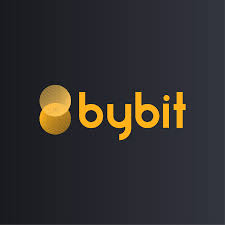Crypto Wealth Management Product Report July 2023
Author: TI Research
Earning income from assets is one of the important user demands in the financial sector, and the scenarios in which it occurs are diverse. This is also true in the emerging financial landscape of Crypto, where the liquidity of assets is more convenient. Whether through centralized exchanges, centralized quasi-banking institutions, or decentralized protocols, users can easily transfer assets. This convenience of liquidity has also led to a high degree of similarity among financial products in Crypto, with returns tending to converge.
During favorable market conditions, whether for direct investment in cryptocurrencies, leveraged trading, or participating in IDOs, mining, and other activities, the demand for liquid funds is high, resulting in "money being relatively expensive." This makes purely financial products less attractive to users. Conversely, during quieter market periods, trading activities decrease, and the demand for liquid funds is lower, making safe and stable income-generating financial products highly sought after. Moreover, in the Crypto space, it is not uncommon for high-interest offerings to attract users to deposit funds, while the entire process remains opaque, leading to the risk of users losing their principal.
In this report, we examine different types of financial products in the Crypto market, hoping to provide users with a comprehensive overview of market financial products and help readers understand what they are actually investing in when they invest in Crypto financial products. What are the risks? How can one judge which financial products are relatively reliable?
We categorize the products in the market based on the types of financial product platforms as follows:
- Centralized financial products
- Financial products offered by centralized exchanges
- Financial products provided by Crypto lending/banking institutions
- Investment financial products offered by traditional financial institutions
- Decentralized financial products: Decentralized finance protocols (DeFi protocols)
The returns and fund flows of financial products offered by centralized exchanges are opaque and carry financial risks, but they are diverse and offer relatively high yields.
To enhance user stickiness and attract more users, centralized exchanges generally engage in various related businesses based on trading functions, with financial services being one of them. Financial products offered by centralized exchanges can be divided into four types: fixed-term deposits, agency participation in decentralized finance, options trading products, and Launchpool. Overall, centralized exchanges offer the most diverse range of financial products, with relatively high yields, but they also have the highest level of opacity. This is especially true for non-compliant exchanges, where the flow of user funds is not publicly disclosed, posing a risk of misappropriation.
Financial products provided by Crypto lending/banking institutions have relatively high transparency and are safer.
Crypto Banking refers to companies that conduct deposit and loan services using digital assets as the underlying assets, similar to traditional banks. Crypto Banking institutions place greater emphasis on fund security and can provide long-term loan services to institutional users, who in turn can offer stable borrowing interest to Crypto Banking deposit users. In contrast, the fixed-term deposits offered by centralized exchanges are only used for internal platform operations, and their yields depend on fund utilization rates, making them relatively unstable, especially during periods of low borrowing demand. Therefore, for users with long-term financial needs and lower risk tolerance, Crypto Banking is a good choice. These platforms offer a relatively rich variety of financial products, but with higher transparency and greater fund safety. Currently, only Crypto Banking provides long-term and stable fixed-income financial services.
Traditional financial institutions offer a limited variety of investment financial products but are more regulated and transparent.
Traditional financial institutions provide users with channels to invest in Crypto using fiat currency without directly holding digital assets. Traditional financial institutions can only offer financial products to qualified investors in countries and regions where services are legally permitted, resulting in higher regulatory influence and transparency. Due to regulatory constraints, traditional institutions can currently only offer trusts/funds that track Crypto trends, leading to a scarcity of product types.
Decentralized financial products have unstable returns but high transparency and low participation thresholds.
Decentralized financial products are defined as DeFi protocols based on Layer 1 or Layer 2 ecosystems such as Ethereum and Arbitrum, providing users with asset allocation, management, and income generation functions.
Users interact directly with these protocols through Crypto wallets, generally needing to transfer assets from their wallets to the vaults (smart contracts) of these protocols. These assets are then allocated to other protocols in the market, generating profits by providing liquidity for various economic activities such as trading and lending.
Decentralized financial products mainly include lending (e.g., Aave, Compound), yield aggregators (e.g., Yearn Finance), structured products (e.g., Ribbon Finance), liquidity mining (e.g., Uniswap, Curve), and liquid staking (e.g., Lido).
The advantages of decentralized financial products include extremely high transparency, low participation thresholds (only a wallet address is needed, no KYC required), and transparent returns; however, their disadvantages include significant susceptibility to market conditions, leading to very low yields during downturns. Currently, only lending protocols can barely maintain a certain scale, while the TVL of other yield types of protocols has decreased significantly. There are few projects that can consistently provide positive returns.















